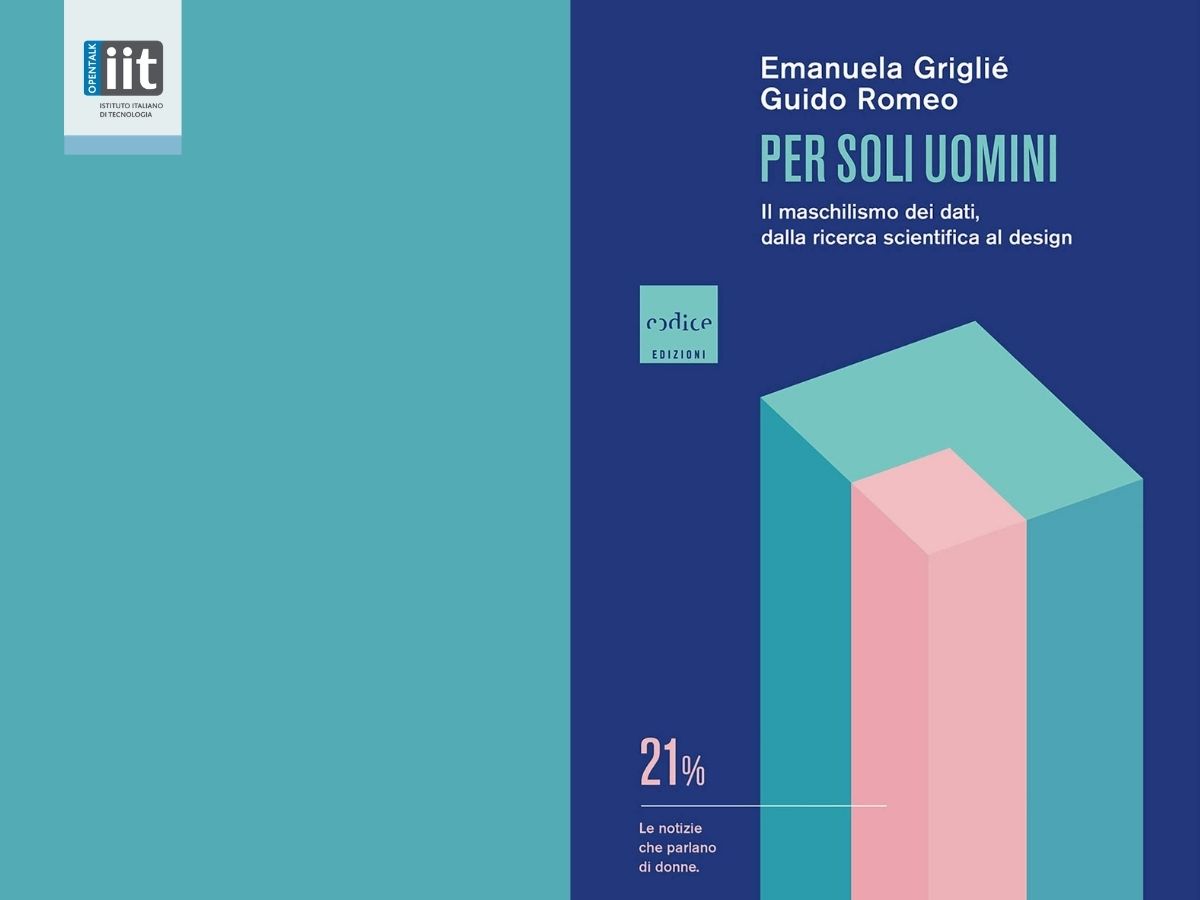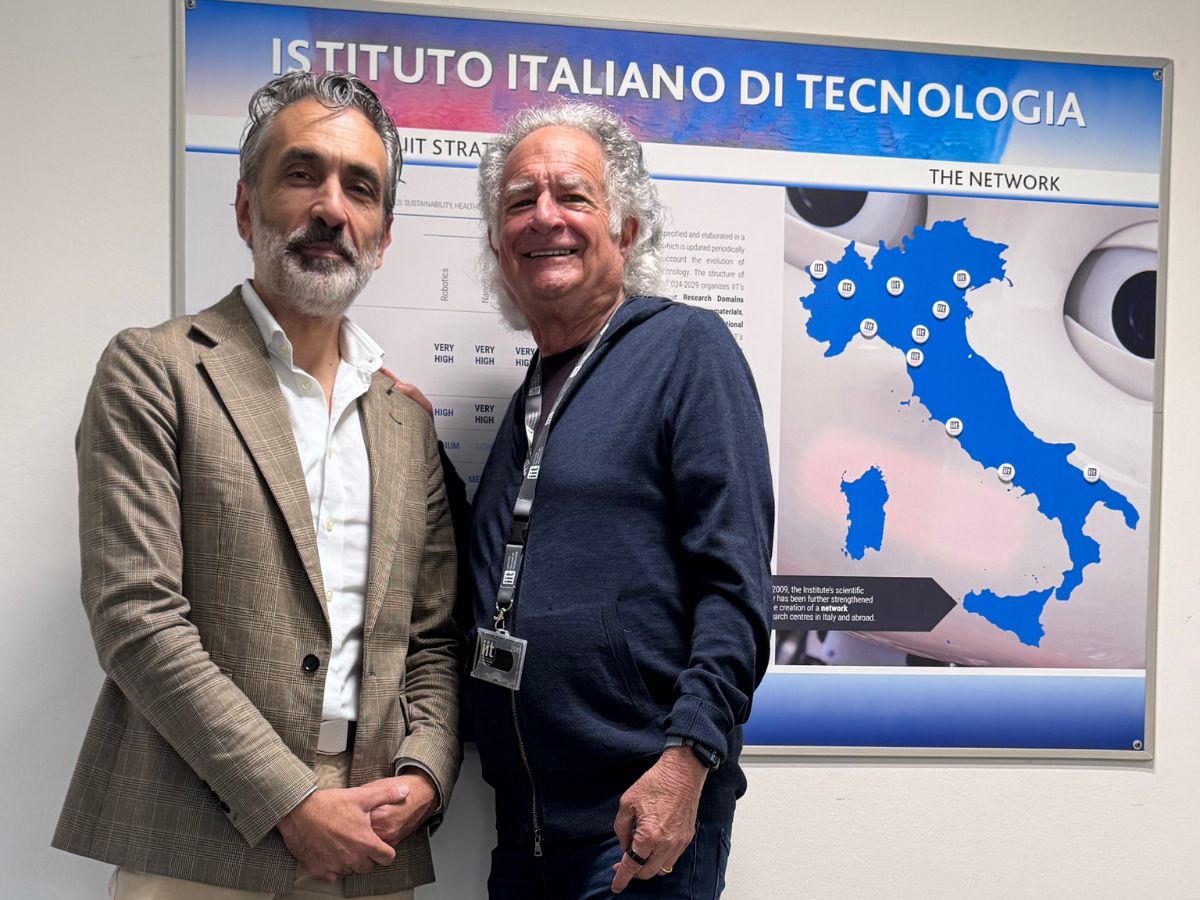Interview with the authors Emanuela Griglié and Guido Romeo.
The glass ceiling of gender discrimination is starting to fracture, but behind it lies an even more insidious barrier, that of data. This is the central theme of Per soli uomini. Il maschilismo dei dati dalla ricerca scientifica al design (For men only. Data’s androcentric characteristics, from scientific research to design), 145 pages on the use of androcentric data, published by Codice Edizioni. The authors, Emanuela Griglié and Guido Romeo, examine the issue of gender disparity that gravely damages science, from medicine to astronomy, including design, industry and society as a whole, both women and men.
The book deals with the so-called ‘one size fits all’ concept, emblematic of a society that is still largely based on a masculine data set and therefore is excessively weighted towards the ‘standard male’, a man belonging to a certain social class, of a certain height, of a certain ethnic group, who certainly does not represent women, but who is neither representative of all men.
There are many examples of the consequences of this social trend, from many areas, ranging from pharmacological research with drugs that have caused enormous damage such as Thalidomide, to the lack of space suits adapted to the physical characteristics of female astronauts, crash tests performed on ‘standard’ dummies, the temperature of public spaces calibrated for men’s average body temperature, mobile phones that are too big for the average size of women’s hands, right through to new technology that seems to perpetuate the same gender gap.
But while, in the analogue world, it is clear that commercial choices and constraints have driven and fuelled discrimination between men and women, the essay asks why today, in the digital age, we are unable to break free from the past and usher in real change.
We interviewed the authors Emanuela Griglié, a contributor to La Stampa and Repubblica Salute, who writes on innovation, digital culture and science, and Guido Romeo, a contributor to Il Sole 24 Ore, dealing with economics and innovation.
How did the idea of writing a book together arise?
EG: Guido and I had been working together for some time and we often found ourselves reflecting on these issues. One day we shared all the material we had already accumulated almost without realising it: notes taken on serviettes in bars, newspaper cuttings, Excel data files.
GR: And so, thanks to last year’s lockdown, we started writing.
There are already texts that have appeared recently on this subject, what is different about yours?
EG: The main difference is that our book is written for everyone, not just for women, encouraging inclusion and benefits for all, because equal rights are a condition that can be achieved only by fighting the same battle together. In addition, we tell the story of the disparity between the ‘standard’ man and other people by quoting data, without any kind of victim mentality.
GR: Rethinking objects and the whole of society in a way that enables them to respond to specific needs is good for everyone and not just for women, who in fact make up 51% of the population. We strongly believe that gender inequality is an issue of social justice and that rights are not a zero-sum game. On this aspect, in the book we look at wage differences between men and women, but also disparity in parental leave. Increasing the average salaries for women does not mean lowering those for men. And the same applies to parental leave: giving more days to new fathers does not mean that mothers’ leave should be reduced.
In the book you point out that while in the analogue world certain asymmetries were caused in part by the need for simplification, today, in the age of big data and customisation, it is completely anachronistic to have so-called ‘one size fits all’ types of technology. Why? And why are we unable to level up the gender gap?
EG: It’s not that we can’t close the gap, it seems more that we don’t want to. From the data we have analysed, we are faced with a scenario made up of peaks and troughs. A few car manufacturers, for example, have made great efforts in this direction, launching vehicles that are suitable and safe for everyone’s physical characteristics. The problem is why just a few car manufacturers have done this, and not all of them.
GR: With our book we wanted to highlight this paradoxical situation. In the age of big data, AI, rapid prototyping and 3D printing, we have much more freedom and adaptability, so there is no longer any justification for what we call ‘one size fits all’.
How much commercial interest is there amongst those moving in the direction of the car manufacturer that you mentioned?
EG: It is certainly important, but that’s no bad thing, because it breaks cultural moulds. At the moment we need momentous, even provocative, acts, to change the real situation.
GR: The ‘#MeToo’ movement, which also affected the world of research, was a provocative act of great impact. In the world of science, this movement triggered a growing demand for more transparency about the funding given to female and male researchers, with the observation that on average, male researchers get richer grants. The fund-issuing sources implicated were asked to comply with the request to declare the amounts allocated, and this led to highly significant results, because there is now a situation of total transparency.
You dedicated the book to your respective children.
EG: I’m super optimistic about the new generations. They are tough, they have different attitudes when compared to ours, and they are innovative in their approach to other genders. For them, certain outlooks are almost automatic, while for us they still take effort, for example in language and writing.
Is the fact that the rules of Italian grammar are ignored when referring to a woman in the context of a job description compiled in masculine terms, in addition to the data that you have studied, irrefutable proof of the existence of a gender gap in our society?
EG: Of course! In the case of language, the attempts to modify it and the controversies that arise provide an indication of the gender gap’s extent. Getting used to a certain kind of language causes huge, fundamental changes. It’s not just a matter of habit.
GR: As regards data, overall it tends to conceal things, but if you isolate and interpret it, you find that it comprises the building blocks on which our society is based, and this has proven fundamental in understanding the phenomenon that we are facing.
Which area surprised you most in terms of deeply-rooted gender disparity?
GR: Without a doubt, the world of new technology and the digital sphere, perhaps the most unexpected because it developed from the rhetoric of egalitarianism, starting with ‘move fast and disrupt’, but in fact it is extremely male-dominated, not only because today most developers, and therefore the minds behind the technology, are men, but also because most venture capitalists are male. Investors are a perfect representation of the ‘standard male’, bringing all the skeletons in the cupboard with them, thus leading to greater investments in male-dominated innovation and technology.
In the book you also talk about the world of information and define it as ‘male centric’. You write “8 out of 10 news items are about men” and go on to say that the problem does not regard just space, but also roles and language. In the field of publishing, you provide an example that highlights what can be achieved by the desire to change, accompanied by the potential of technology.
EG: Yes, we looked at the semantic analysis software ‘She said-He said’ adopted by the Financial Times and developed by Virginia Stagni. It is a simple, but very effective, application that sends alerts based on how many masculine and feminine pronouns and how many women’s or men’s names are included in an article, giving the editor immediate feedback on the text’s degree of balance. This shows the difference that can be made by the minds behind new technology.
You end the book with the chapter ‘Towards new gender metrics’, in which you mention people including Linda Laura Sabbadini, Central Director of ISTAT and a pioneer of gender statistics in Italy. Did you want to conclude on a positive note?
EG: In this chapter, we wanted to summarise the positive actions that are being performed in the area of data collection and beyond. It is encouraging to see that something is happening. For example, we have moved from the ten-year census to a permanent census, which provides far more detailed information on gender issues. In addition, in 2020, Gender Impact Assessment (GIA) was included in the regulations of the Chamber of Deputies, thanks to its Vice-President Maria Edera Spadoni.
GR: We now have the chance of gathering large amounts of data. Now we have to prove that we can interpret it and take the respective measures to alleviate gender disparity.
Your book appeared at a moment that could be defined as one of cultural and social ferment. Maria Chiara Carrozza was recently appointed President of the Centro Nazionale delle Ricerche (CNR, the National Research Centre), and Alessandra Galloni as Director of Reuters, the international news agency. In both cases, they are the first women to hold that position in the respective institutions. However, in your book you say that “at the current rate it will take 280 years to achieve gender parity in computer science and 258 in physics”. According to the statistics you have analysed, is the transformation already under way or are we just at the start of a new impetus?
EG: The episodes that you mentioned are important events, and it is true that the social ferment is palpable, to the point that it caused an upheaval at the San Remo Festival, a quintessentially traditional and conservative context in Italy, where the female orchestra conductor’s request to be called ‘Direttore’ (male conductor) rather than ‘Direttrice’ (female conductor) was widely reported. However, the very fact that such episodes are perceived as remarkable shows that change is only just beginning.
GR: Gender disparity is a multifactorial disease. We can be optimistic and hope that progress will be linear and exponential in order to overcome it, but the initial degree of separation is so wide that we need strong cultural shifts on the part of men and women, a dramatic realignment, in order for transformation to accelerate into real change.





